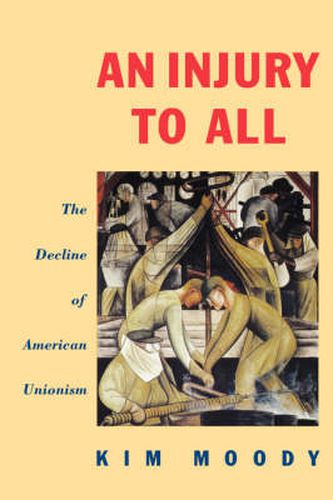Readings Newsletter
Become a Readings Member to make your shopping experience even easier.
Sign in or sign up for free!
You’re not far away from qualifying for FREE standard shipping within Australia
You’ve qualified for FREE standard shipping within Australia
The cart is loading…






Over the past decade American labor has faced a tidal wave of wage cuts, plant closures and broken strikes. In this first comprehensive history of the labor movement from Truman to Reagan, Kim Moody shows how the AFL-CIO’s conservative ideology of business unionism effectively disarmed unions in the face of a domestic right turn and an epochal shift to globalized production. Eschewing alliances with new social forces in favor of its old Cold War liaisons and illusory compacts with big business, the AFL-CIO under George Meany and Lane Kirkland has been forced to surrender many of its post-war gains. With extraordinary attention to the viewpoints of rank-and-file workers, Moody chronicles the major, but largely unreported, efforts of labor’s grassroots to find its way out of the crisis. In case studies of auto, steel, meatpacking and trucking, he traces the rise of anti-concession movements and in other case studies describes the formidable obstacles to the organization of the unorganized in the service sector. A detailed analysis of the Rainbow Coalition’s potential to unite labor with other progressive groups follows, together with a pathbreaking consideration of the possibilities of a new labor internationalism.
$9.00 standard shipping within Australia
FREE standard shipping within Australia for orders over $100.00
Express & International shipping calculated at checkout
Over the past decade American labor has faced a tidal wave of wage cuts, plant closures and broken strikes. In this first comprehensive history of the labor movement from Truman to Reagan, Kim Moody shows how the AFL-CIO’s conservative ideology of business unionism effectively disarmed unions in the face of a domestic right turn and an epochal shift to globalized production. Eschewing alliances with new social forces in favor of its old Cold War liaisons and illusory compacts with big business, the AFL-CIO under George Meany and Lane Kirkland has been forced to surrender many of its post-war gains. With extraordinary attention to the viewpoints of rank-and-file workers, Moody chronicles the major, but largely unreported, efforts of labor’s grassroots to find its way out of the crisis. In case studies of auto, steel, meatpacking and trucking, he traces the rise of anti-concession movements and in other case studies describes the formidable obstacles to the organization of the unorganized in the service sector. A detailed analysis of the Rainbow Coalition’s potential to unite labor with other progressive groups follows, together with a pathbreaking consideration of the possibilities of a new labor internationalism.